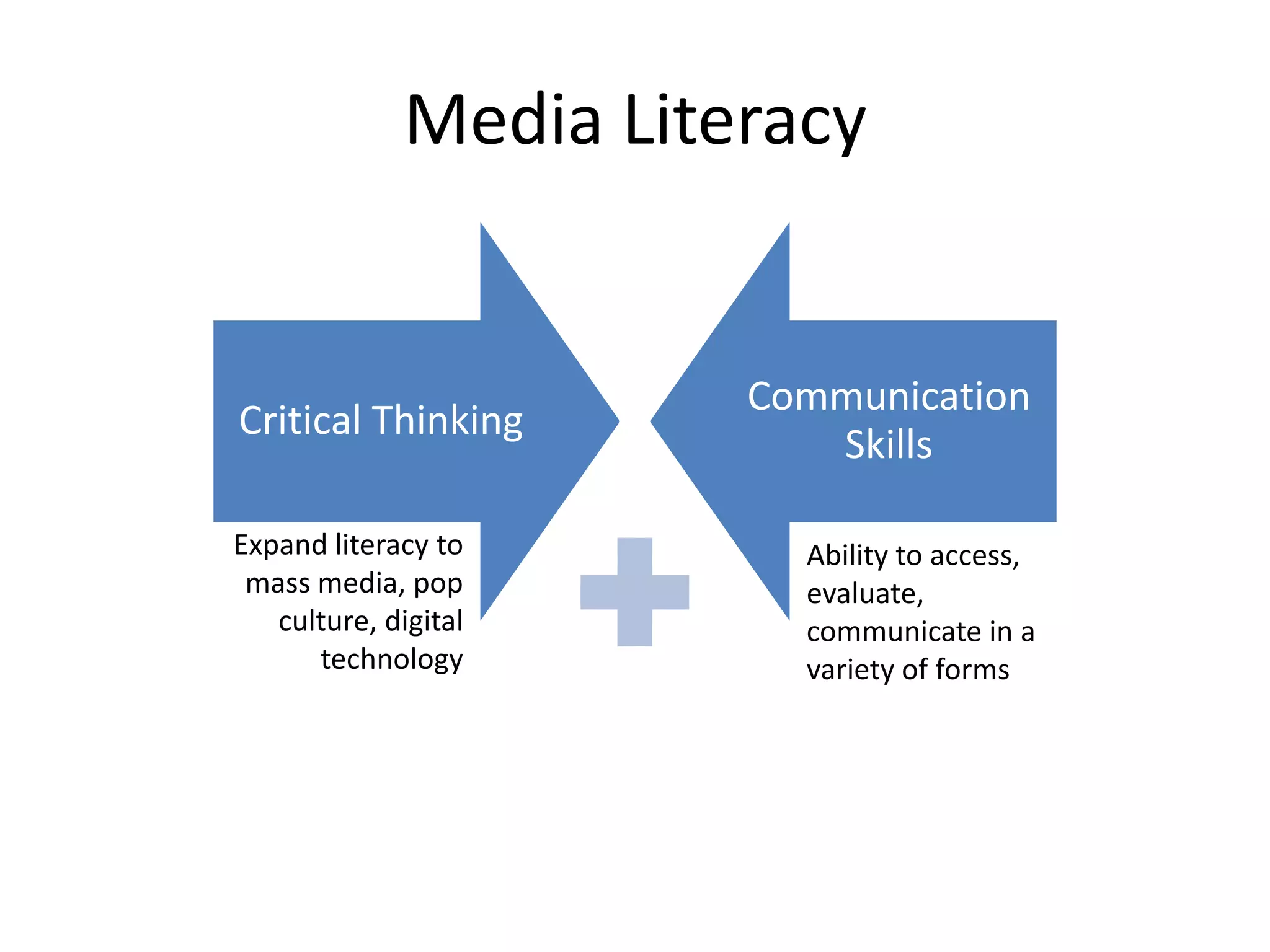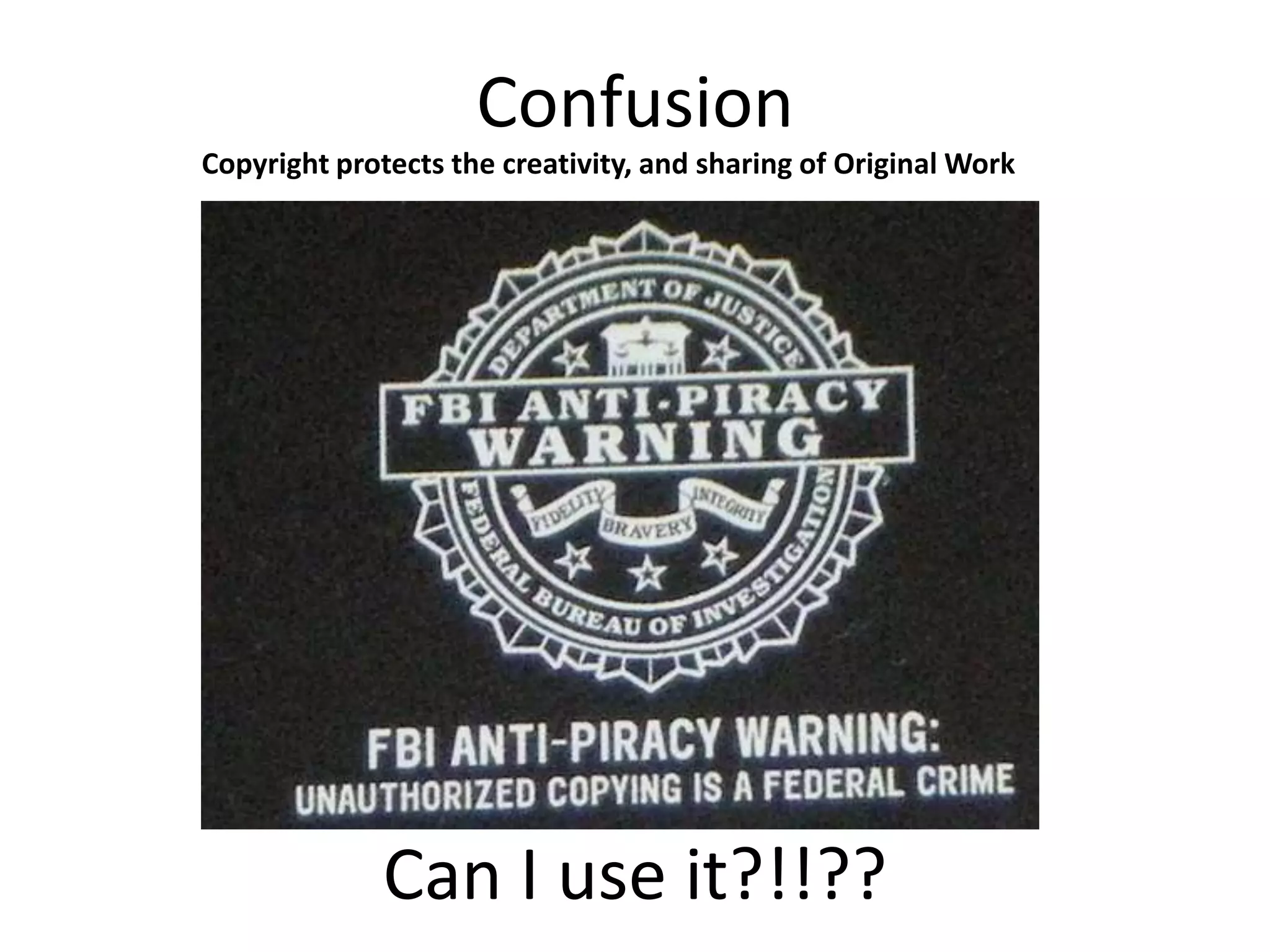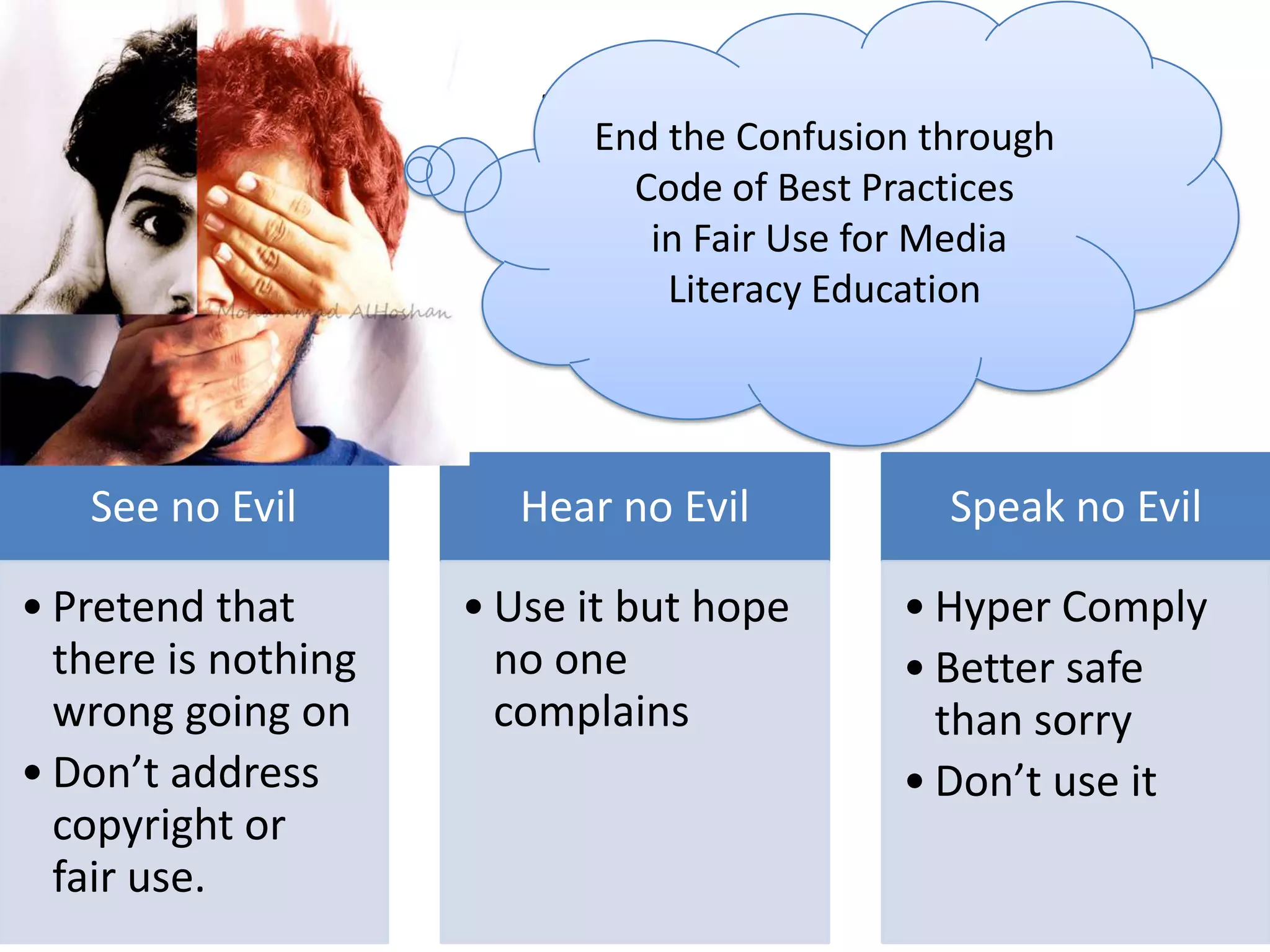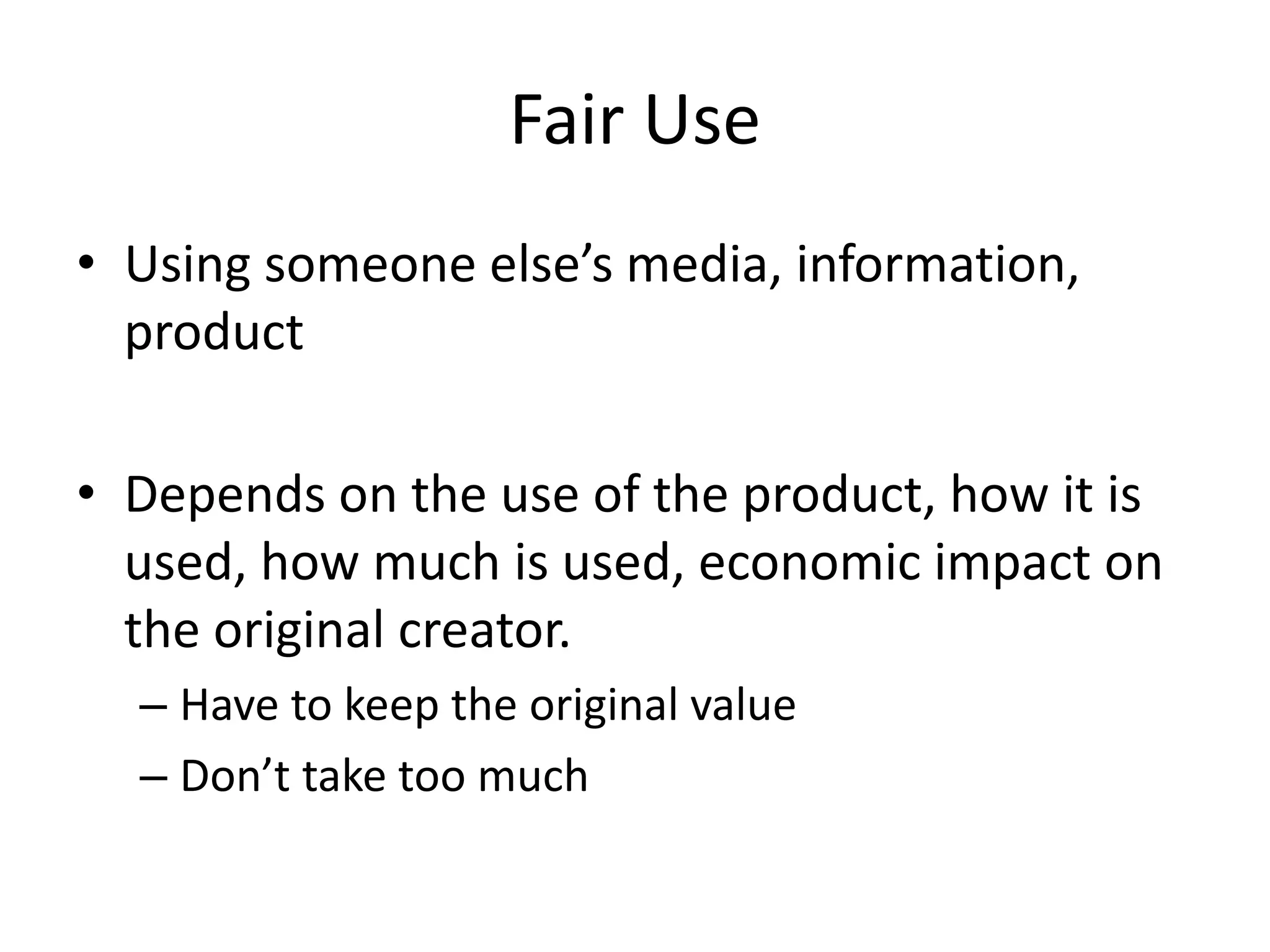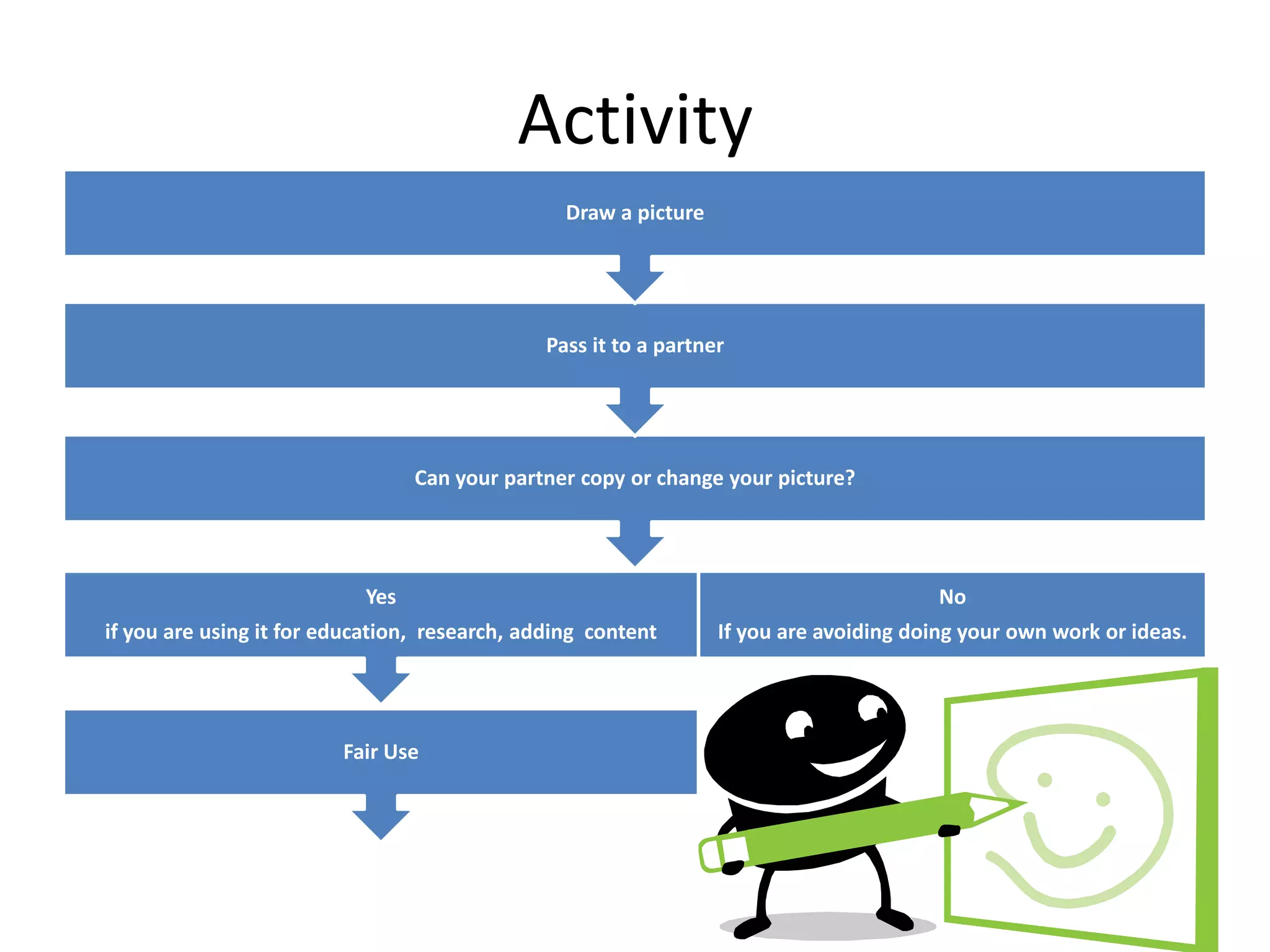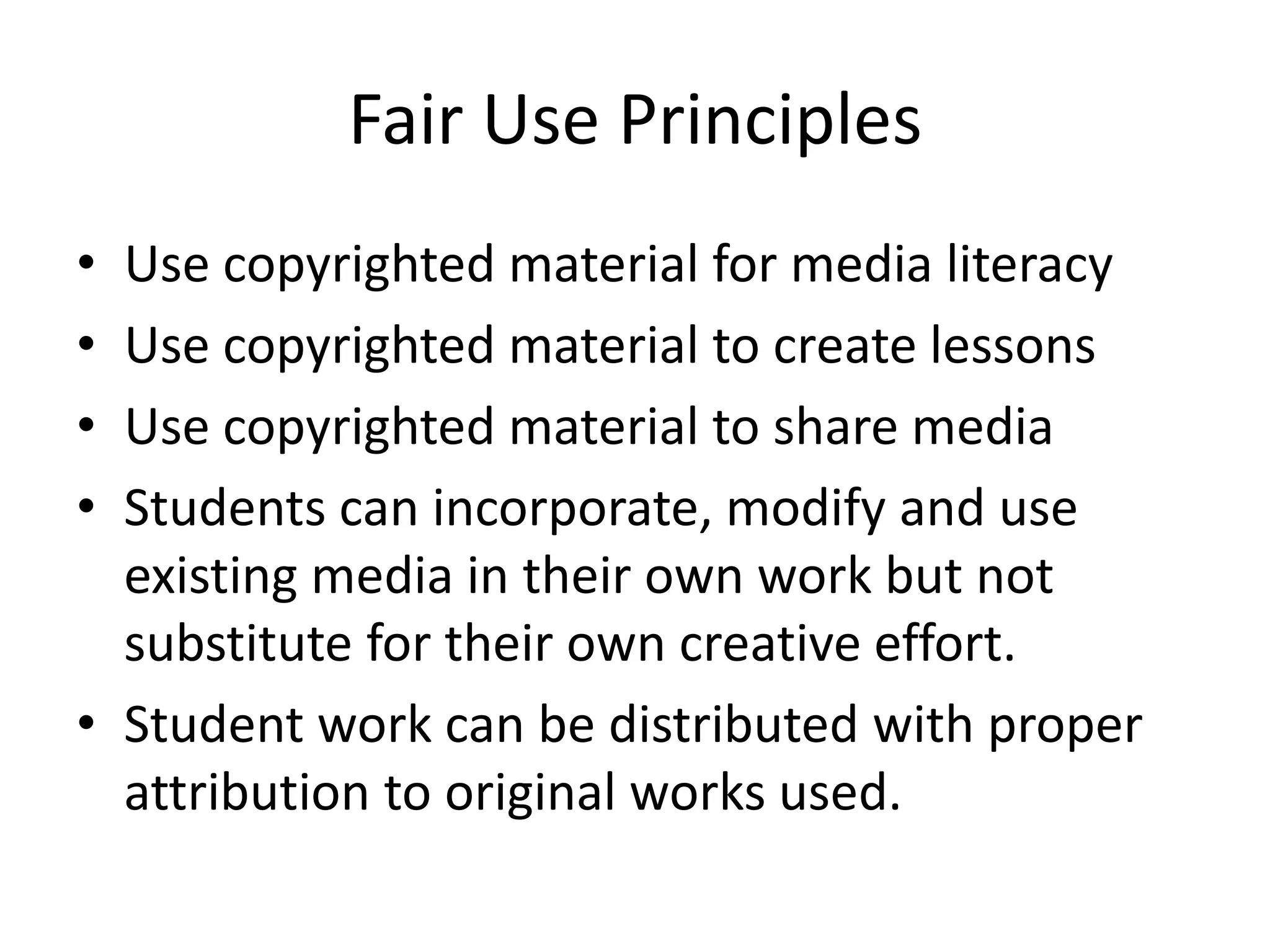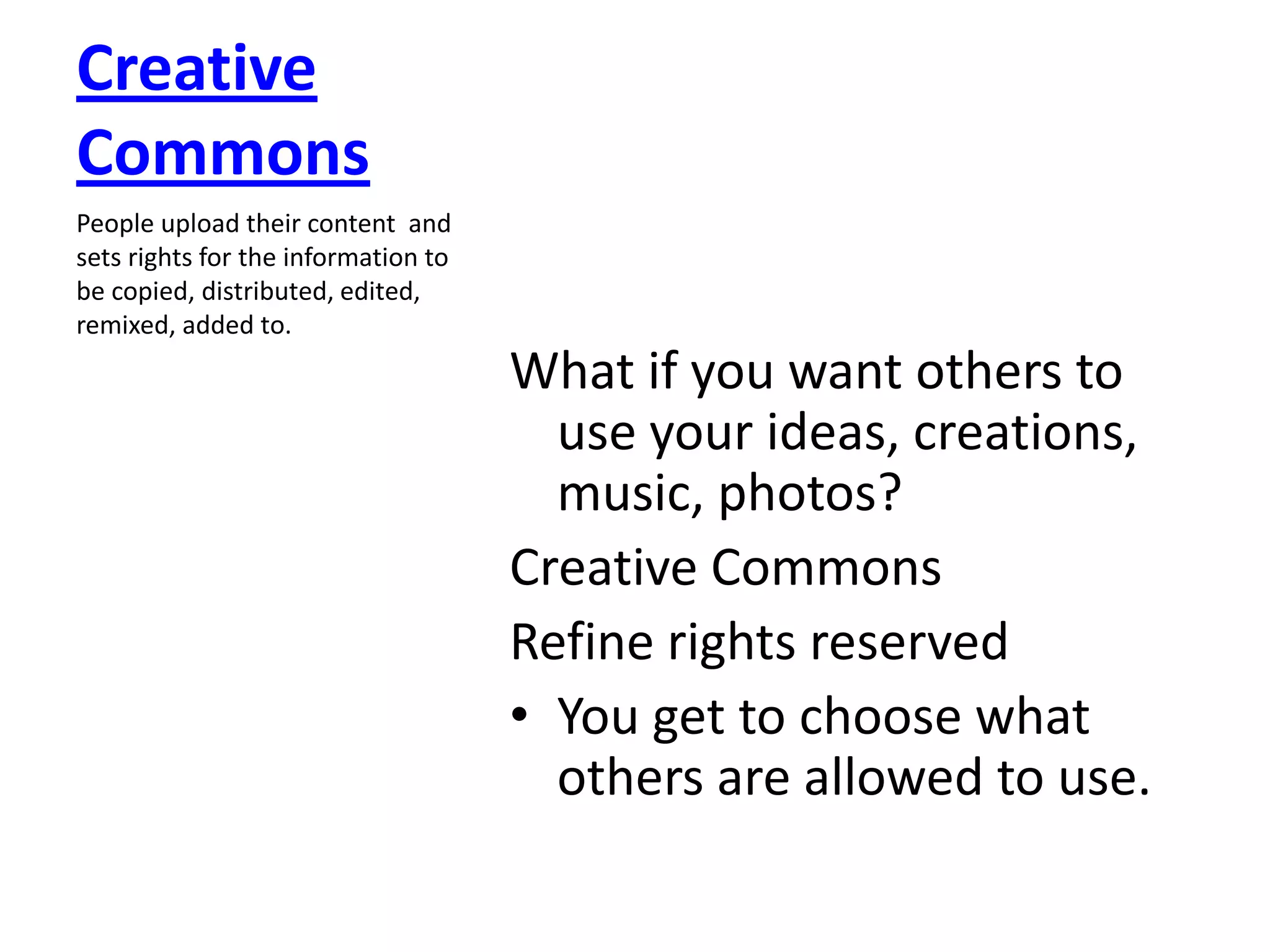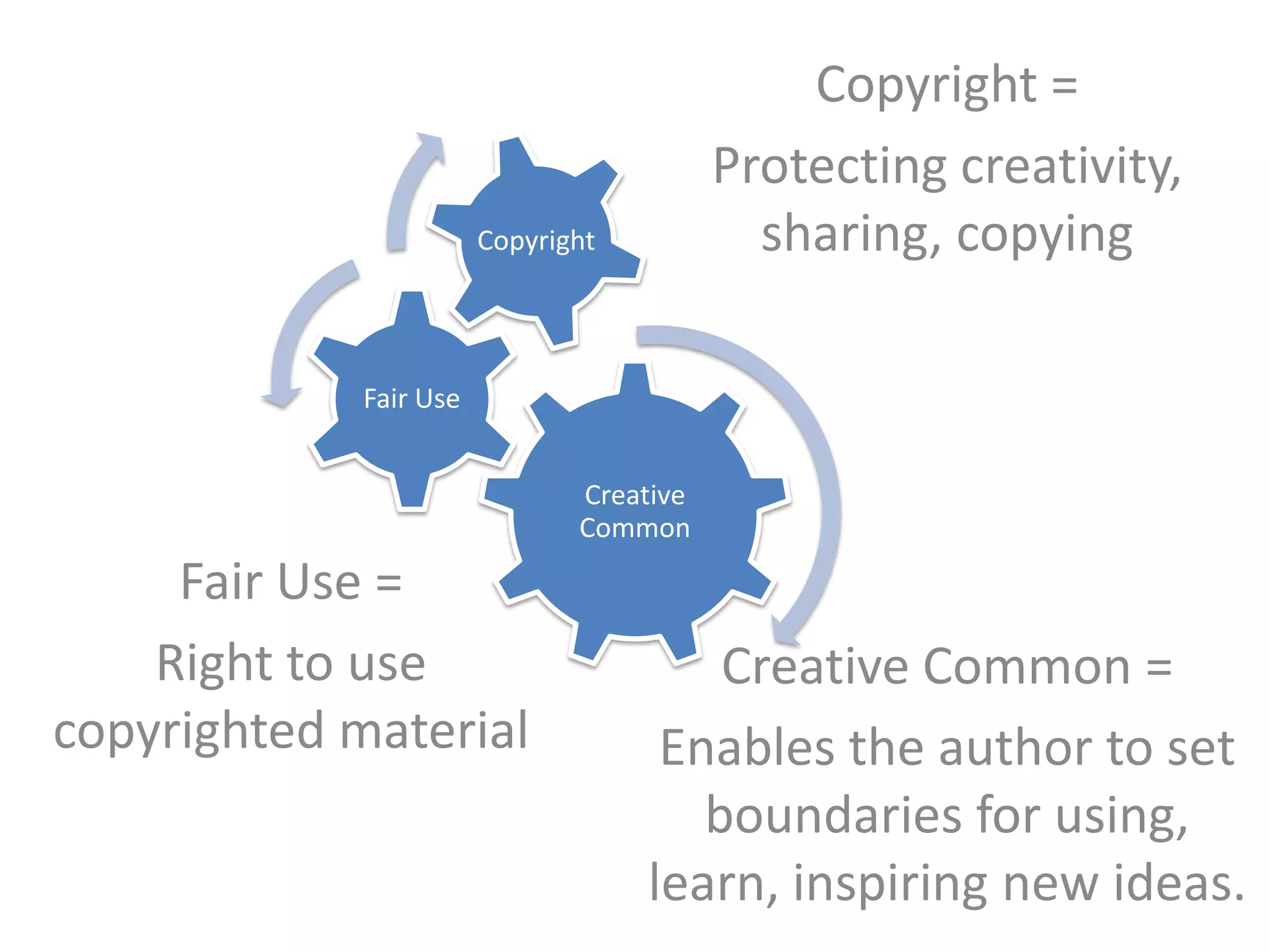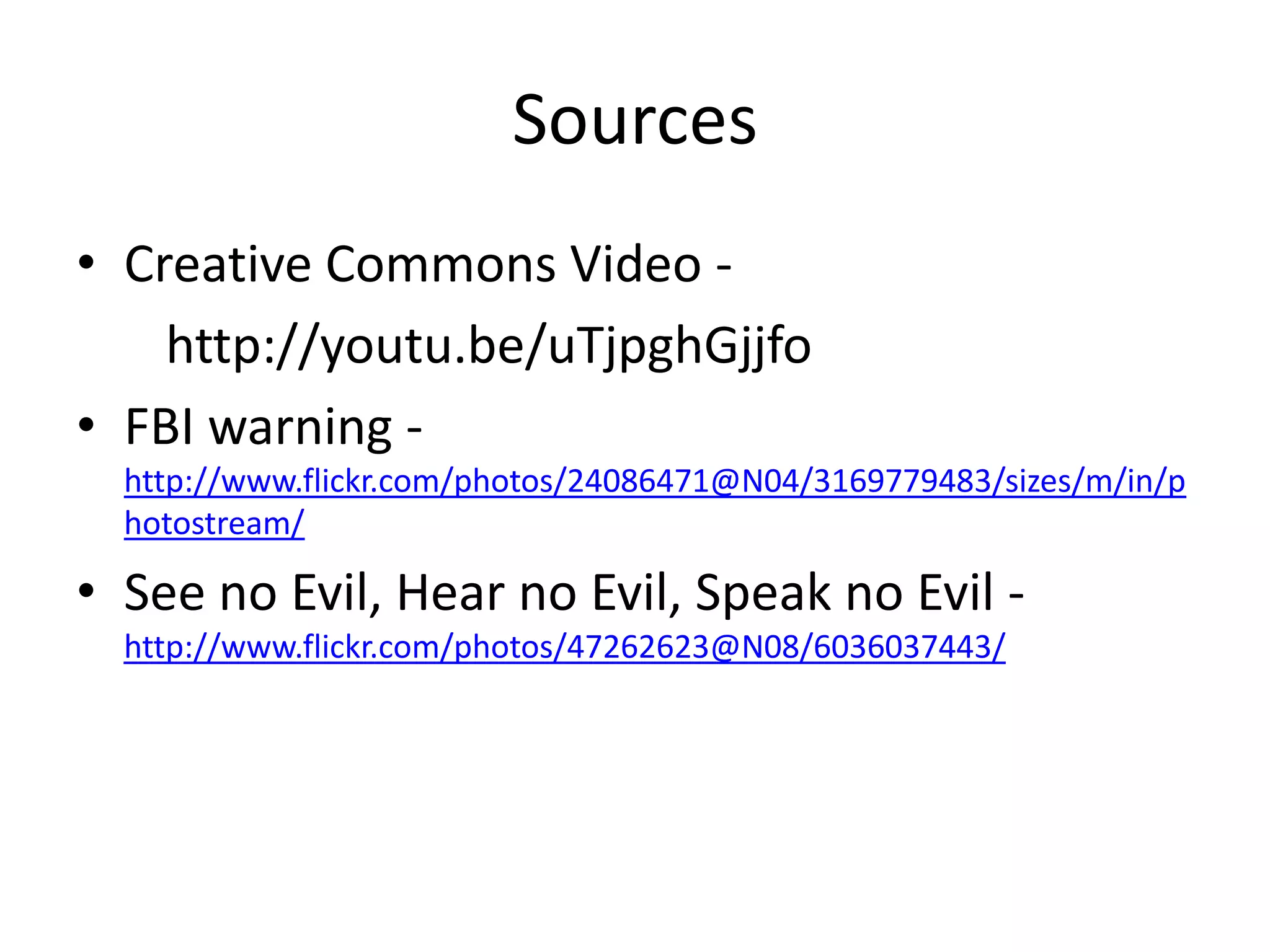This document summarizes key concepts around media literacy, copyright, and fair use. It discusses expanding literacy to include mass media, pop culture, and digital technology. It also covers evaluating and communicating across different forms of media. The document explains the confusion around what content can legally be used and shared. It proposes addressing this confusion by establishing a code of best practices for fair use in media literacy education. It outlines different approaches teachers may take around issues of copyright and provides an overview of fair use and creative commons principles.
